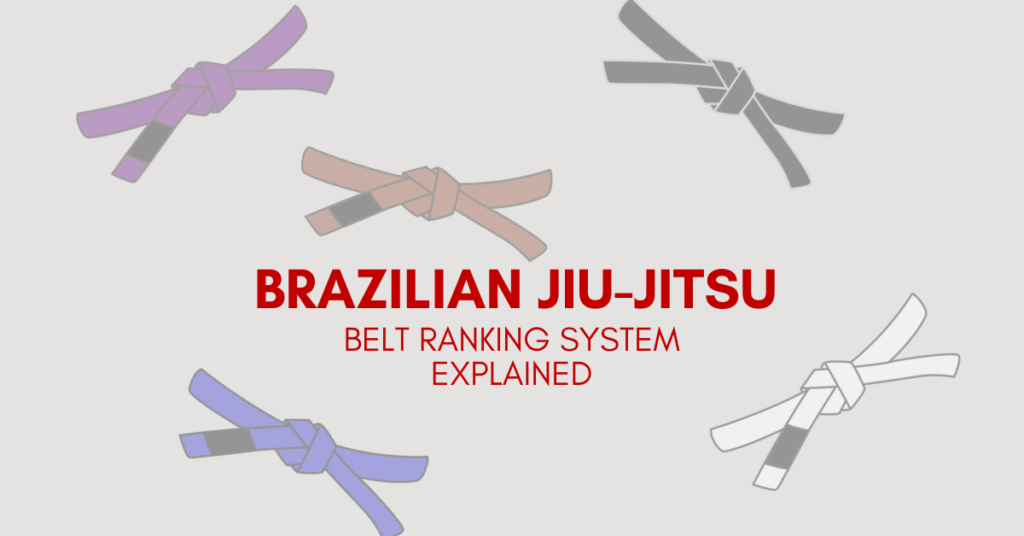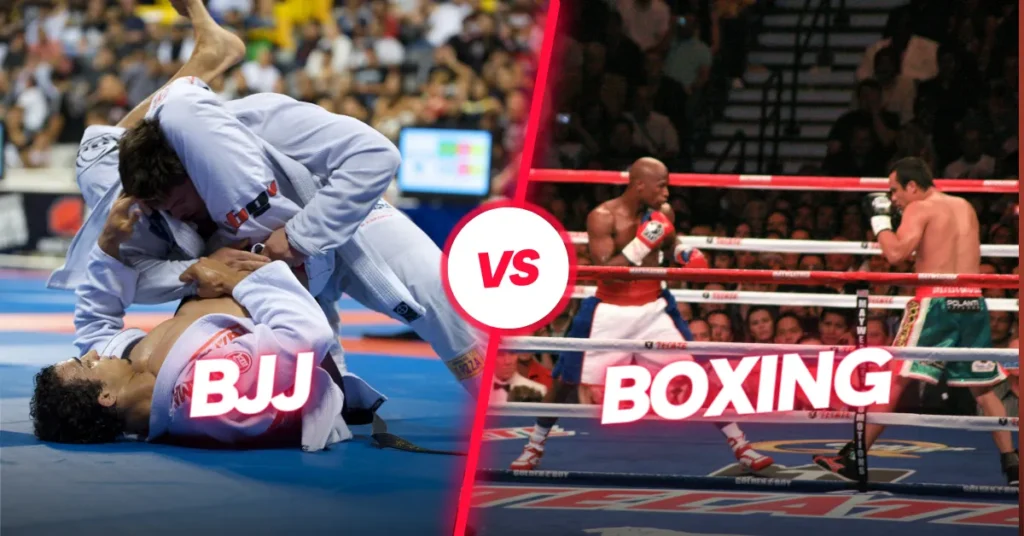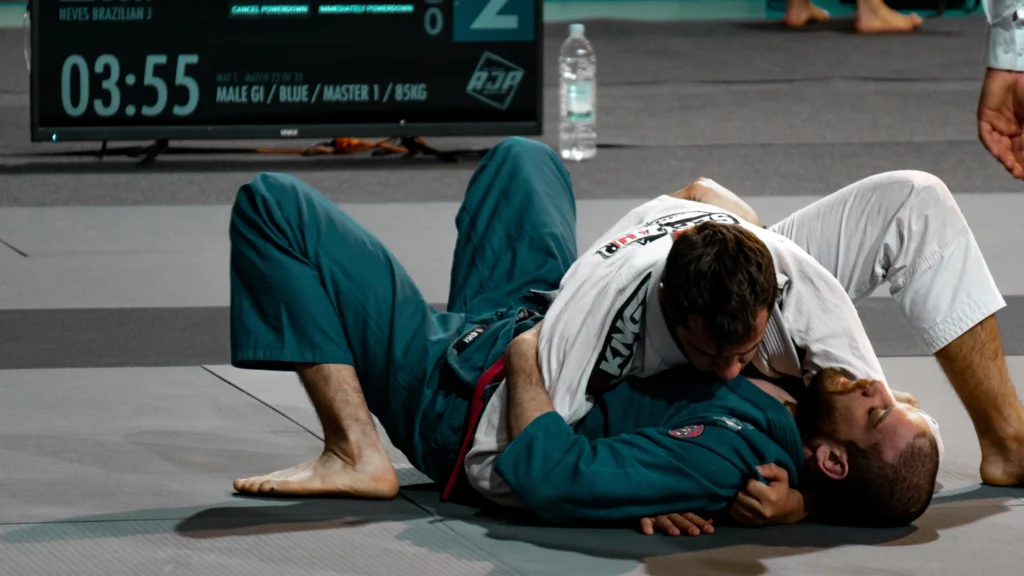The Brazilian Jiu-Jitsu/BJJ belts ranking system is an important way to measure a practitioner’s progress and skill level. The system consists of several colored belts, each representing a different rank. The belt order in BJJ typically starts with the white belt, followed by blue, purple, brown, and black belts. Each belt level has its own set of requirements and expectations. Belt promotions in BJJ usually require a minimum amount of training time, as well as a demonstration of technical knowledge and proficiency. Understanding the BJJ belt rankings is essential for practitioners to track their progress and set goals for advancement in the art.
Table of Contents
Key Takeaways
- The BJJ belt ranking system is used to measure a practitioner’s progress and skill level.
- The order of BJJ belts starts with white, followed by blue, purple, brown, and black belts.
- Belt promotions in BJJ require a minimum amount of training time and a demonstration of technical knowledge.
- The belt rankings provide a sense of structure and hierarchy within the BJJ community.
- Understanding BJJ belt rankings is important for tracking progress and setting goals for advancement.
The Journey from White Belt to Black Belt
The journey from a white belt to a black belt in BJJ is a testament to the dedication and perseverance of practitioners. Each belt level represents a milestone in their progression, signifying the growth of their skills and knowledge in Brazilian Jiu-Jitsu. Let’s explore the different belt levels and the challenges faced at each stage of the journey.
White Belt Level
At the white belt level, practitioners are beginners who have just embarked on their BJJ journey. It is a time of exploration and learning, where they are introduced to the fundamental techniques and positions of the art. The focus is on developing a solid foundation, emphasizing escapes and defensive tactics. White belts often face the challenge of adapting to the physical demands of BJJ and understanding the intricacies of its grappling techniques.
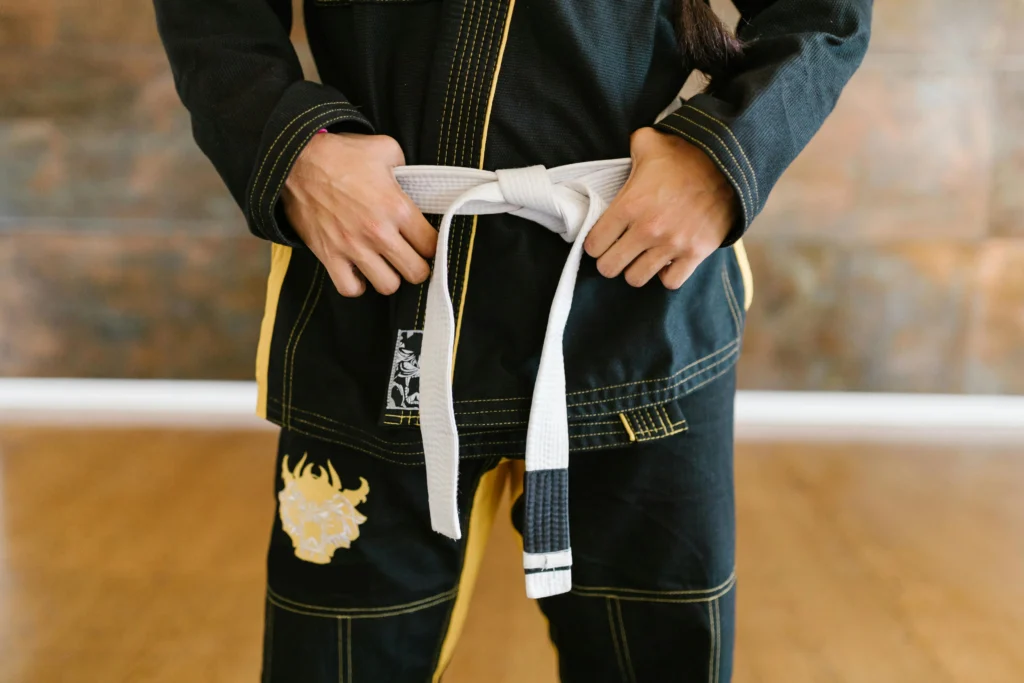
Blue Belt Level

As practitioners progress to the blue belt level, they expand their technical knowledge and start to learn more advanced techniques. They gain a broader understanding of different positions, transitions, and submissions. Blue belts have a deeper understanding of the art and are capable of applying techniques with greater precision and timing. However, they still encounter challenges in refining their skills, improving their strength and flexibility, and adapting to different grappling styles.
Purple Belt Level
The purple belt level represents an intermediate stage in the BJJ journey. Practitioners at this level have accumulated a significant amount of knowledge and experience, enabling them to instruct lower-ranked students. Purple belts have a comprehensive understanding of BJJ and can execute techniques with fluidity and creativity. They face the challenge of continuing to refine their skills, expanding their technical arsenal, and developing their own unique grappling style.
Brown Belt Level
Brown belt is the penultimate ranking in the color belt system. It is a testament to years of dedicated training, demonstrating a high level of skill and proficiency in BJJ. Brown belts have a deep understanding of the art and possess a vast repertoire of techniques. They are capable of dissecting complex situations, adapting their tactics, and strategizing effectively. At this level, practitioners are challenged to consistently innovate their approach, cultivate resilience, and mentor lower-ranked students.

Black Belt Level
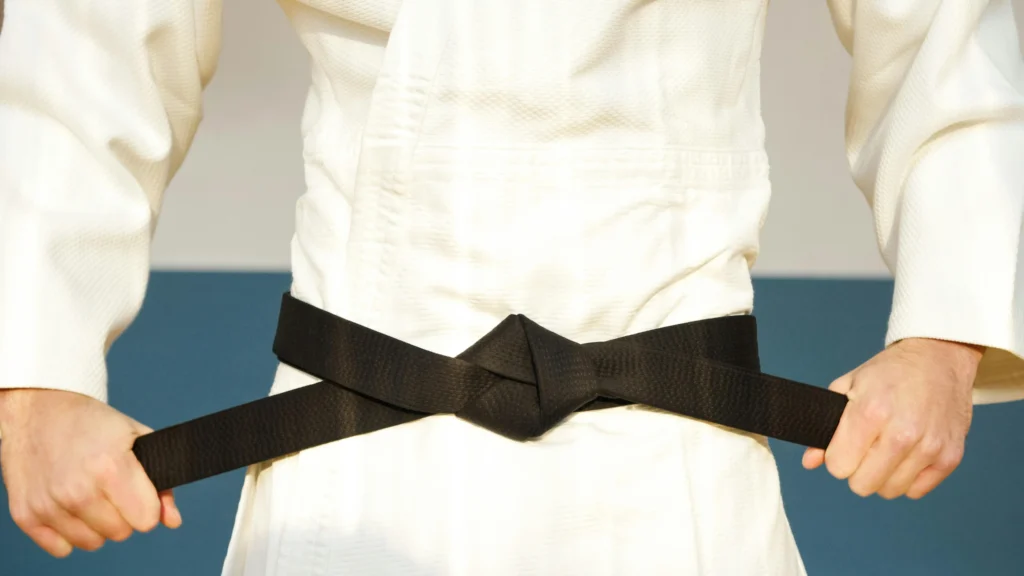
The black belt is the pinnacle of achievement in Brazilian Jiu-Jitsu. It represents expert-level skill, knowledge, and experience. Black belts have undergone years of rigorous training, teaching, and practical application of techniques. They possess a profound understanding of the art’s intricacies and can adapt their strategies to any situation. Black belts face the ongoing challenge of staying at the forefront of BJJ, continuously evolving their skills, contributing to the growth of the art, and inspiring future generations of practitioners.
The journey from a white belt to a black belt in BJJ is a transformational experience. It requires years of dedication and perseverance, along with a commitment to continuous growth and improvement. Belt promotions serve as milestones of recognition, rewarding practitioners for their achievements and motivating them to reach new heights in their BJJ journey.
The Significance of BJJ Belts Ranking System
The belt rankings in Brazilian Jiu-Jitsu (BJJ) hold great significance and serve multiple purposes within the BJJ community. They act as a measure of a practitioner’s progress in their training, reflecting their evolving technical knowledge and practical skill. Each level of the belt system represents a milestone in the practitioner’s journey, symbolizing their increasing proficiency and expertise in the art.
Belt promotions are more than just a recognition of achievements; they are a tangible way to reward and acknowledge the dedication and effort put into advancing one’s skills. In BJJ, the belt ranks provide a sense of structure and hierarchy, enabling practitioners to understand their position and gauge their level of expertise within the community.
Furthermore, the belt system has a motivational aspect, as practitioners strive to attain the next level in their BJJ journey. The belt rankings help set goals and foster a sense of ambition and growth. They serve as a clear pathway for practitioners to follow, providing a benchmark for their progress and offering an incentive for continual improvement.
The significance of belt rankings in BJJ cannot be overstated. They represent not only technical knowledge and practical skill but also the recognition of an individual’s achievements and dedication to the art. The belt system is an integral part of the BJJ culture, fostering a spirit of discipline and perseverance while guiding practitioners through their personal development in this dynamic martial art.
Our Belt Recommendation
If you are looking for a premium belt for BJJ, Fuji is a great option.
Click the button to check out their offers!
FAQ
What is the belt order in Brazilian Jiu-Jitsu?
The belt order in Brazilian Jiu-Jitsu typically starts with the white belt, followed by blue, purple, brown, and black belts.
How long does it take to advance in belt promotions in Brazilian Jiu-Jitsu?
Belt promotions in Brazilian Jiu-Jitsu usually require a minimum amount of training time, as well as a demonstration of technical knowledge and proficiency.
What belt is Joe Rogan in BJJ?
Joe Rogan holds a black belt in Brazilian Jiu-Jitsu, showcasing his advanced skill and expertise in the martial art.
What belt is Jocko Willink?
Jocko Willink is also a Brazilian Jiu-Jitsu black belt, demonstrating a high level of proficiency and experience.
Is a BJJ blue belt a big deal?
A BJJ blue belt is a notable achievement, placing practitioners in the top percentage of grappling ability within the general population.
Is purple belt a big deal?
The purple belt in BJJ is a crucial stage, signifying a high level of aptitude and commitment, bridging the gap between intermediate and advanced expertise.
What is the journey from a white belt to a black belt like?
The journey from a white belt to a black belt in Brazilian Jiu-Jitsu is a long and challenging one, with each belt level representing a different stage of skill and knowledge acquisition.

